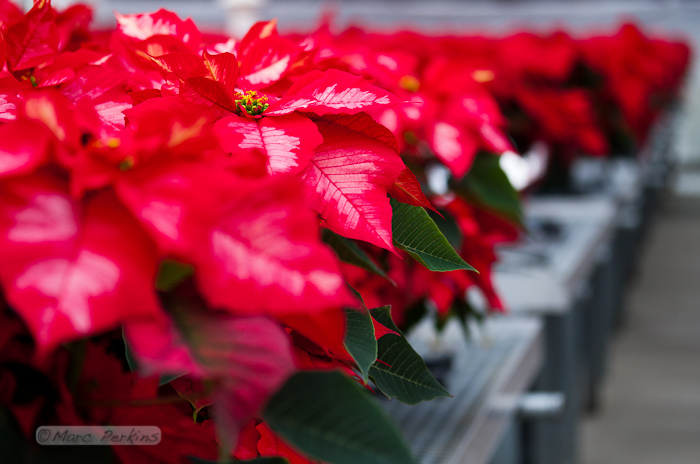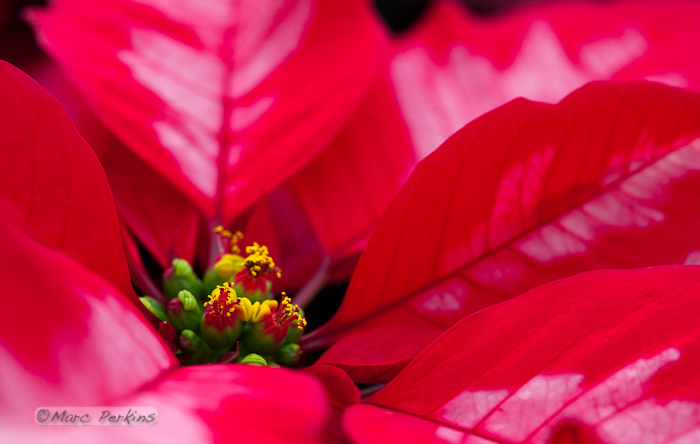[This is the second in a series of three posts; the first post is: Poinsettias up close: where are the flowers? and the third is Poinsettia flowers part three: the female parts.]

Earlier this week I posted about finding the flowers in poinsettias (spoiler: the petals aren’t the big red structures!). After writing that post, though, I realized it was missing a good closeup of the flower clusters themselves. So, yesterday afternoon I took a quick break from my end-of-the-semester piles of grading and headed back to Orange Coast College’s Ornamental Horticulture Department to get a few more pictures.
The flowers of poinsettias (Euphorbia pulcherrima) are actually cyanthia: flowering structures composed of many individual male or female flowers surrounded by modified leaves. Here’s what they look like:

To see that image larger, follow this link to see it as a large, high-resolution image.
That picture shows multiple cyanthia (flower clusters) at the end of a stem surrounded by a sea of red bracts (colored leaves associated with a flower). Each green ball tipped with red is an involucre, a cluster of bracts (leaves) fused into a cup-shaped structure that contains multiple male flowers and one female flower within it.
Let’s look at the involucres and their flowers even closer:

To see that image in all its glory, follow this link to see it as a large, high-resolution image.
Emerging from each involucre you can see red filaments supporting yellow anthers that are dusty with individual pollen grains. The filaments are emerging from the multiple male flowers growing within each involucre. Also emerging from each involucre you can see a number of dark-purple structures supported by short stalks; I believe these may be the stigmas and styles of the flowers (though this species is supposed to have only a single female flower per involucre with a stigma divided into three sections, so I’m not certain what those dark-purple structures are).
[edited 1/20/2012: the dark purple structures are indeed not the female flowers, as I write about in this post. I’m not at all sure what these small structures are. Anyone have any ideas?]
The bright yellow, liquid-filled structures attached to the involucre are nectar glands filled with nectar (to attract pollinators). A few individual pollen grains are stuck to the surface of the left-most nectar gland.
I’ll leave you with a crop of that last image showing two cyanthia in more detail

And, if you want your own poinsettias to admire, head to Orange Coast College this Friday: they’re having their annual poinsettia sale, which is open to the public. See my first post in this series for more information.
More pictures
To see more of my poinsettia pictures, head to my Poinsettia Gallery.













